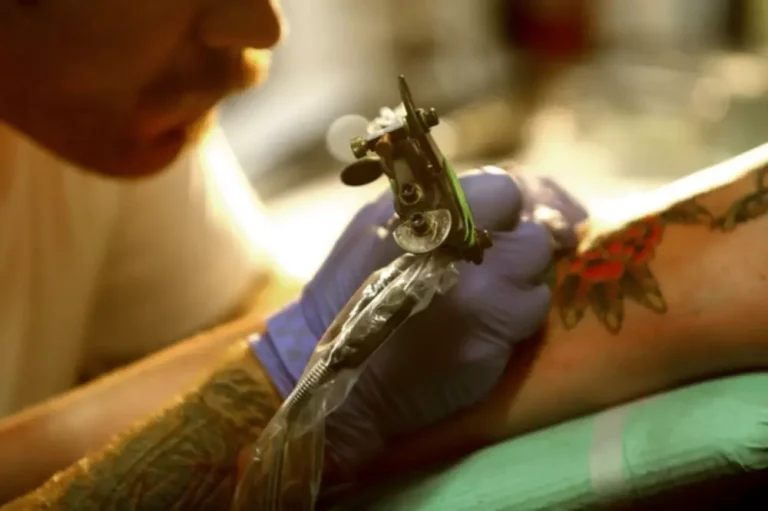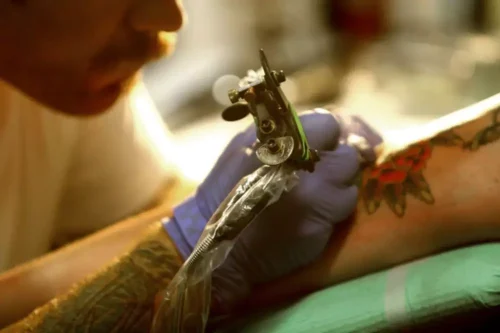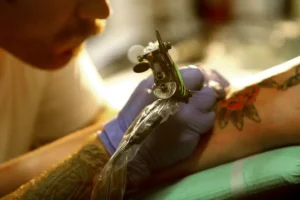
A number of transdermal testosterone preparations have become available recently, but it is difficult to deliver large amounts of testosterone using the transdermal formulations. Users may supplement their program of injections and pills with topical gels to provide a constant low-level testosterone supply. Recent studies increasingly suggest that the use of AASs and other PEDs often occurs in conjunction with use of multiple classical drugs of abuse (77, 78). PED users are increasingly encountered in needle-exchange programs, where they may sometimes represent most of the clientele (79, 80).
Doping risk and enabling environments

Addiction Resource does not favor or support any specific recovery center, nor do we claim to ensure the quality, validity, or effectiveness of any particular treatment center. No one should assume the information provided on Addiction Resource as authoritative and should always defer to the advice and care provided by a medical doctor. Current anti-doping measures rely primarily upon the punishment of athletes who use performance-enhancing drugs. The effectiveness of this is hotly debated, given that many athletes still use these drugs despite the potential consequences. It is important for athletes who use drugs in sports to seek help as soon as possible, as a drug test for athletes is a regular occurrence, and one random test could severely affect their reputation. The pressure that comes with being a competitive athlete with a team, fans, and family behind them negative effects of drugs in sport can be intense, and in many cases, can prompt the abuse of alcohol or drugs in sport.
What is doping?

Notably, the median age of onset across all studies consistently fell into the narrow range of 22 to 24 years. However, the actual median age of onset is probably higher, because at the time of recruitment, many study candidates had not completed the age range of risk for starting AAS use. The chair selected a 6-member expert panel (approved by The Endocrine Society) with expertise in the use and health consequences of PEDs. The expert panel conducted its deliberations regarding the scientific statement content through multiple teleconferences, written correspondence, and a face-to-face meeting. All panelists volunteered their time to prepare this Scientific Statement without any financial remuneration.
Methods to increase oxygen transport
Decades of draconian punishments have failed to eliminate, or even consistently lower levels of recreational drug use within the general population; there were more than a half million deaths related to illicit drug use in 2017 alone (United Nations Office on Drugs & Crime, 2019). Much like the complex individual and structural strains that shape problematic drug use outside of sport contexts, the disproportionate material and symbolic rewards that drive some athletes’ interest in doping are likely to persist, and in turn inspire systematic doping schemes. Policy changes that seek to reduce harm among some athlete groups, such as recreational, youth, or elder sport participants, could provide a similar concession within the sport context. Harm reduction proposals for addressing doping have attempted to do so by advancing suggestions such as medically supervised doping, health checks, and threshold testing (Kayser et al., 2007; Kayser & Tollneer, 2017; Smith & Stewart, 2015). Utilising such strategies in a policy context may begin to help foster sport enabling environments that are so far available only through illicit doping systems. The enabling processes and environments represented by systematic doping demonstrate a dynamic interplay with the multi-layered risk environment structured by anti-doping policies and cultural stigma.
- I had finished a stage race in Southern Spain, like a week-long stage race, and I was just like a starfish on my bed, collapsed.
- Though systematic doping is often done for collective performance enhancement, related concerns include avoiding detection and ensuring athletes remain healthy enough to compete.
- This reflects an individual/athlete-centred view of doping that places the policy focus and responsibility squarely on the athlete (Dimeo & Møller, 2018).
- It can mean increased heart rate and blood flow and elevated body temperature.
- The IOC, on the other hand, is responsible for organizing and overseeing the Olympic Games.
- We only have to look at bodybuilding, a sport that has historically encouraged PED use, for proof of this fact.
However, as Coomber (2014) has argued, perceptions and understandings of substance use in the sport and fitness world are directly related to those of substance use in the non-sport world. Doping substances and methods are those that will improve or enhance performance within sport or fitness contexts. Indeed, doping can be understood as a contextually specific substance use practice. Overall, it is a common belief that substance abuse and addiction likely occur at a lower rate in athletes compared to the general population 2. Competing at a high level appears to be somewhat protective in some areas of sport outside of the concept of doping.
Healthdirect Free Australian health advice you can count on.
Research should also explore the social and cultural factors that contribute to the use of these substances and how they can be addressed. Overall, a comprehensive and coordinated effort is needed to address the dark side of bodybuilding and promote safe and healthy practices in this sport. The prevalence of doping is unclear, though there is a significant gap between prevalence estimated by researchers and the official testing results. It is difficult to determine the effect anti-doping policies have had on doping prevalence, as there were no baseline prevalence studies before WADA’s founding. However, the discrepancy between the positive test rate and even the lowest prevalence estimates indicate that a large number of athletes who report engaging in doping are not being detected, potentially exacerbating PED-driven inequalities between athletes.


A focus on education and helping these athletes see their potential without drugs in sports is vital to keeping them clean. It is also essential to establish a moral framework that helps the athlete see that doping isn’t the right choice, even if others are doing it. But the exact methods for cheating them are constantly evolving as the testing process changes. As a result, there is no perfect guide to passing a doping test while still using performance-enhancing drugs in sport. Drug abuse in sports can be tested through urine, blood, saliva, and hair samples. The samples can be tested using chromatography, immunologic assay, and mass spectrometry.
How Many Professional Athletes Use Steroids?
To learn more about the use of prohibited substances in sport visit the Sport Integrity Australia website. It aims to protect the integrity of sport and promote clean and fair competition. This is done by actioning anti-doping principles set out in Australian legislation and also meeting international requirements. The use of performance-enhancing drugs may, in a range of cases, more closely resemble running with a tailwind than mastering a new athletic skill. A sprinter who runs with a tailwind, a marathon runner who rides the subway, or a high jumper who uses a trampoline are not better placed to explore the limits of human potential in their respective sports.
Performance Enhancing Drugs

Fifth, PED users often do not trust physicians; in one study, 56% of AAS users reported that they had never disclosed their AAS use to any physician (21). I would say I take cycling a lot less seriously now, just kind of enjoy https://ecosoberhouse.com/ it a lot more. It got pretty focused on just how much power you’re pushing into the pedals, you almost became just like a number, and that got old really quickly.
Anabolic Agents (Including Testosterone)
In addition, the probability for highly aggressive behaviors was maintained for the AAS-treated rats throughout the study, whereas it was decreased for the placebo-treated rats. These observations are similar to the relatively long-term behavioral changes we see in humans after AAS use. AASs are the most commonly used PEDs, with testosterone, boldenone, and trenbolone being the most frequently detected drugs among illicit PED users in the United States (Figure 4). Although boldenone is a veterinary steroid not approved for human use, this fact has not diminished its popularity among illicit AAS users.
